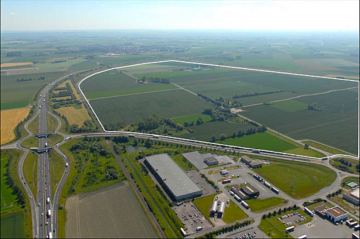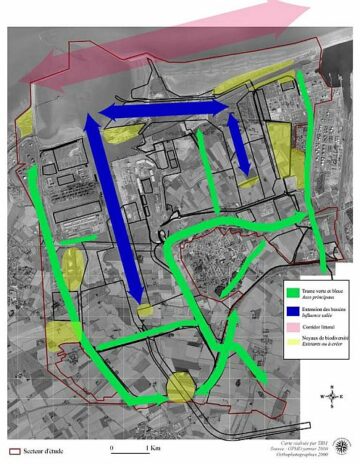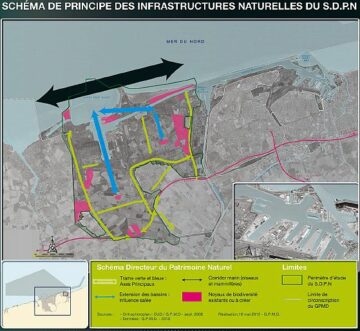Challenge(s)
How could the port authority protect the local biodiversity, specifically local bird communities ?
Good practice
Implement biodiversity conservation plans in port areas
To harmonize the expansion of port operations into previously untouched areas with the necessity to consider their effects on biodiversity, it's crucial to proactively establish a long-term strategy. The BirdWatch Ireland and Dublin Bay Biosphere are monitoring the local bird population to understand how they interact and are impacted by the port city activities. By tracking the movement and habitats of these local and migrating bird species, the port authority of Dublin can adjust their activities accordingly throughout the year.
This good practice also includes objective 10.4 (Supporting the efforts of civil society to protect fauna and flora in the City Port territory) of the AIVP's 2030 Agenda.
Case study
In 2011, the Port of Dunkirk published a Natural Heritage Master Plan, which followed on from the survey of local biodiversity it had established previously. This guidance document is now considered to be a benchmark model for the treatment of natural environments in redevelopment projects for a vast port area (17 km of coastline and 7000 hectares of land). The plan is built around biodiversity hubs, consisting either of zones of special importance to be conserved, or deteriorated environments to be restored. Eco-corridors, future so-called “green and blue belts”, will be used to create a network, not just between these different zones but also with the wider region. In the long term, the port is committed to conserving and managing some 1290 ha of space dedicated to biodiversity, representing 43% of the space still available for development and a budget of 9.7 million euros over 30 years. The support measures planned include the production of an eco-report, to provide a short, medium and long-term assessment indicating whether the reduction of natural spaces reused for development is being offset by the amount of space devoted to protected or restored environments. In 2016, after 5 years of implementation, many actions for biodiversity in port areas and 20% of the Natural Heritage Master Plan were achieved. New inventories were carried out in 2016. They will allow to refine and evolve the Natural Heritage Master Plan. These data also contributed to an eco-report by the end of 2017 allowing to monitor the trends in biodiversity over these last years with regard to the Port of Dunkirk development.
More information: Dunkerque Port



